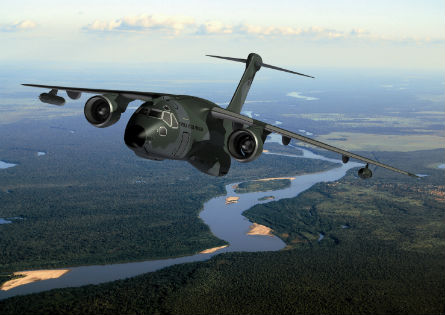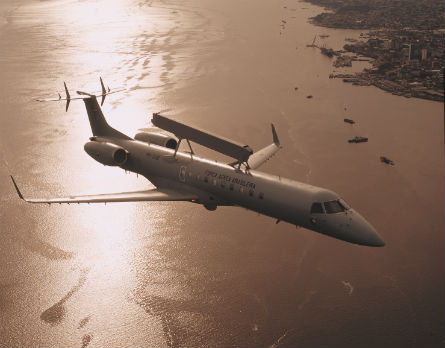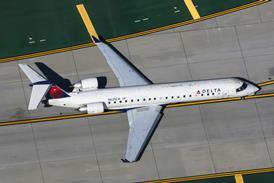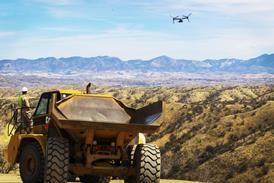In 2020, Embraer Defense and Security (EDS) will have fielded the KC-390 tanker/transport in Brazil and several other countries. It will have almost completed development of a new surveillance platform based on the E-170/190 family. It will be managing a vast border surveillance system of the Brazilian frontier supported by its own satellites, sensors and unmanned aircraft systems. And it will have withdrawn from the attack aircraft and trainer market that has been the defence portfolio's foundation for nearly 30 years. That, anyway, is the corporate vision of the standalone defence and security company established by Embraer in December 2010.
EDS was established with an annual revenue base of $670 million. Embraer expects to close 2012 with more than $1 billion in sales from its defence company, an at least 50% increase in two years, says EDS chief executive Luiz Carlos Aguiar.
As it has increased in size, it has also broadened its portfolio. In 2011, EDS acquired controlling stakes in Brazil's command and control specialist Atech and surveillance systems maker OrbiSat. It has also created the Harpia joint venture with Elbit Systems-sponsored AEL to adapt Israeli unmanned aircraft to Brazil's requirements and the Visiona joint venture with Telebras to develop and launch a geosynchronous communications satellite in 2014.
The acquisitions and new relationships signal a departure from Embraer's comfort zone as a maker of aircraft. However, it will need each of these new capabilities to win a pending contract with the Brazilian army worth up to $4 billion. Called the System of Vigilance of the Frontier (SISFRON), Embraer would be required to install and manage an integrated border surveillance system.
The Phase 1 contract in December will focus on surveillance of a 1,000km (620mi) stretch of the Paraguay and Bolivia border, a known crossing point for smugglers, Aguiar says. In Phase 2, the army plans to deploy unmanned aircraft systems on the border to supplement other airborne- and ground-based sensors, he adds.
SISFRON is the company's opportunity to establish itself as a systems integrator. When the air force deployed an airspace surveillance network in the mid-1990s - System for the Vigilance of the Amazon (SIVAM) - Raytheon was selected as the system integrator and Embraer played a minor role. The management of SIVAM has since passed to Atech, which is now a part of EDS. Embraer has also delivered a command and control centre to Mexico, along with three ERJ-145 airborne early warning and control (AEW&C) aircraft.
However, SISFRON will provide the company with its first experience as an integrator for a broad surveillance network, touching nearly every aspect of a country's defence and security portfolio.
The only missing piece for Embraer in the SISFRON project is the lack of a maritime component, an element that will be addressed when the Brazilian navy moves forward with its Blue Amazon Management System (SISGAAZ) contract - expected to be awarded after 2014, Aguiar says.
Meanwhile, Embraer is still focused on growing its military aircraft production business. The Brazilian air force awarded Embraer a $1.6 billion contract in April 2009 to develop the KC-390, a twin-engined, jet-powered, medium transport intended to replace the Lockheed Martin C-130.
The KC-390 already accounts for the largest share of the defence company's annual revenues. Embraer expects to book about $400 million in revenue for the KC-390 in 2012, up significantly from the roughly $160 million recorded in 2011.
 |
|---|
| Embraer The KC-390 is intended to replace the Lockheed Martin C-130 |
The budget increase reflects the company's activity on the programme. Embraer entered the joint definition phase last August, in which the final design is frozen. The joint definition phase began two months late, and continues to lag slightly. Embraer originally planned to complete the joint definition phase in mid-2012, but now expects to move on to the next phase by the end of the year, Aguiar says.
At that point, Embraer will have two years to assemble and fly the first test aircraft. The first flight had always been described as some time in 2014, but Aguiar clarifies that the event should now occur in late 2014. Embraer will then have two more years to certificate the aircraft's basic airworthiness and prove it can perform all of the missions currently flown by Brazil's C-130s, including cargo delivery, paratroop drops, search and rescue, and firefighting.
It is the KC-390's proposed flexibility that has helped Embraer secure letters of intent for 60 aircraft from six countries, including 28 from Brazil. Three more of the tentative customers - Argentina, Chile and Colombia - come from Latin America, with the Czech Republic and Portugal also involved.
The company's original marketing plan for the KC-390's 23t payload capacity identified a potential replacement market for nearly 700 aircraft, but that was a conservative estimate. It assumed no growth in cargo fleets and excluded certain markets already tied to either Russian or US suppliers.
But the marketing strategy is now in the process of expanding, with help from an unlikely source. Boeing is looking to win a major fighter contract from the Brazilian air force with the F/A-18E/F Super Hornet. In April, the US manufacturer of the C-17 signed a memorandum of understanding to collaborate with Embraer on a wide range of products. A month later, Boeing agreed to launch an updated marketing study of the KC-390, focusing on opening new markets well known to the US contractor.
Boeing's study is expected to be completed in October, Aguiar says, but some of the likely targets are already clear. Boeing has a substantial presence in Saudi Arabia, having sold tankers, fighters and airborne warning and control aircraft. The Royal Saudi Air Force has a requirement to replace a fleet of ageing C-130H airlifters, and has already drawn interest from the Lockheed Martin C-130J and the Airbus A400M. Aguiar confirms the Saudi requirement could emerge as a target market.
Another potential new customer for the KC-390 with Boeing's background is the US Air Force. The USAF must soon decide how to replace its C-130H fleet, as the C-130J is now replacing mostly C-130Es. Boeing's support could help Embraer view the USAF requirement with more optimism.
"This is one of the possibilities," Aguiar confirms, "but it would not be the first one."
International collaboration is fundamental to Embraer's defence strategy. The company exists to support its military client in Brazil, but leverages foreign capabilities and investment to meet national requirements. The Brazilian military is expected to contribute about 30% of revenues for EDS this year, Aguiar says. Although that ratio should narrow to a roughly even split in 2014, Embraer expects the long-term revenue split will range between 65% foreign and 35% domestic as the KC-390 enters the international market, he says.
With the KC-390 now less than five years away from entering service, EDS is already looking ahead to its next major aircraft development programme.
The most likely candidate will be a replacement for Brazil's P-99 and R-99, the ERJ-145-based surveillance and command and control aircraft. The ERJ-145 AEW&C was initially fielded with the Saab Erieye radar, with 15 models delivered so far.
 |
|---|
| Embraer The ERJ-145 has had a radar upgrade developed by DRDO |
More recently, Embraer has teamed with India's Defence Research and Development Office (DRDO), which has developed a new phased-array surveillance radar for the ERJ-145. Embraer delivered all three ERJ-145 AEW&Cs with the new radar to the DRDO on 16 August. The DRDO has an option to buy another seven aircraft if the system proves it can do the job, Aguiar says.
As Embraer looks to an ERJ-145 AEW&C replacement, a larger version of the DRDO radar installed on either an E-170 or E-190-series jet is possible, Aguiar says. The Brazilian air force has a requirement to launch the programme within five to seven years, he adds.
Source: Flight International























